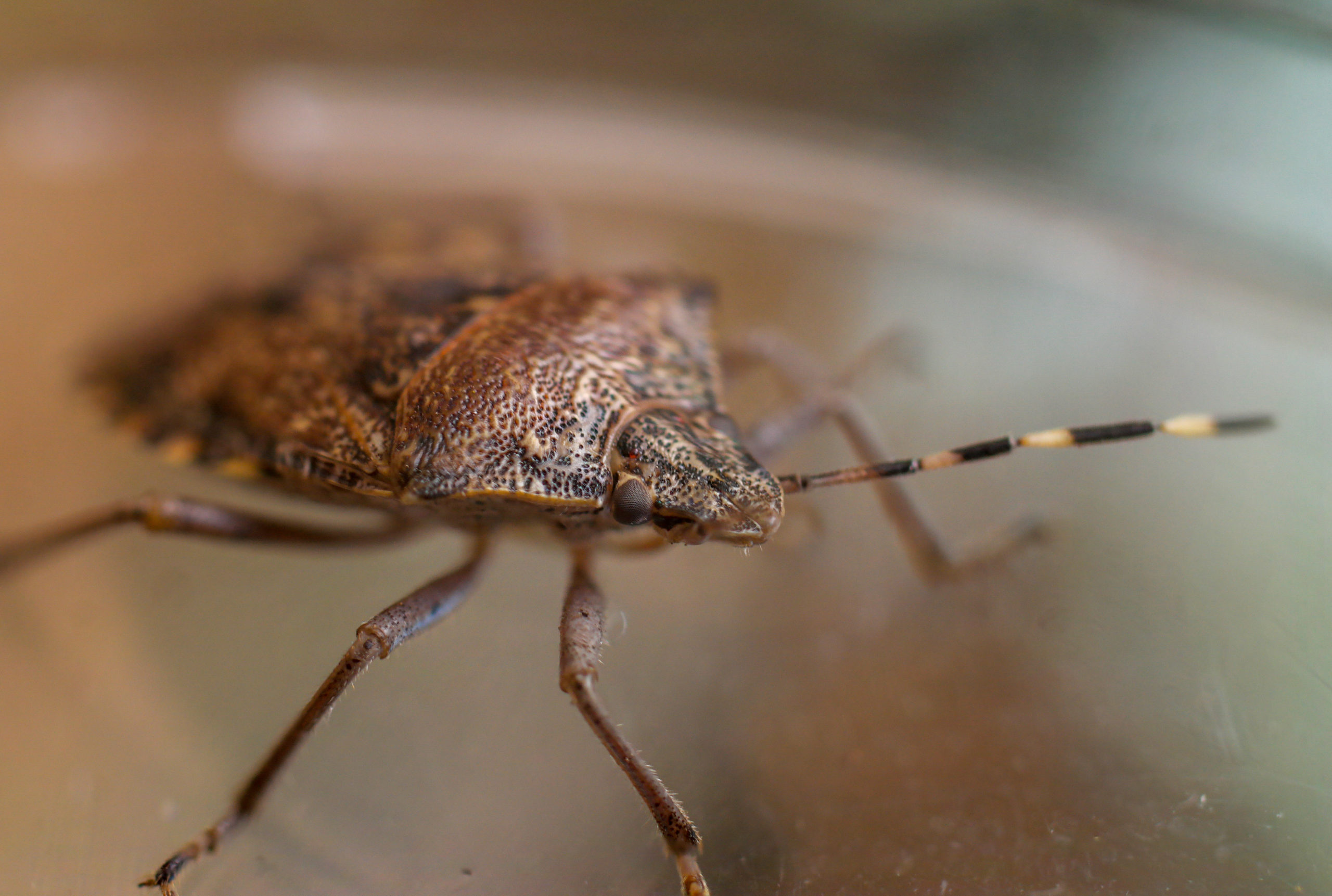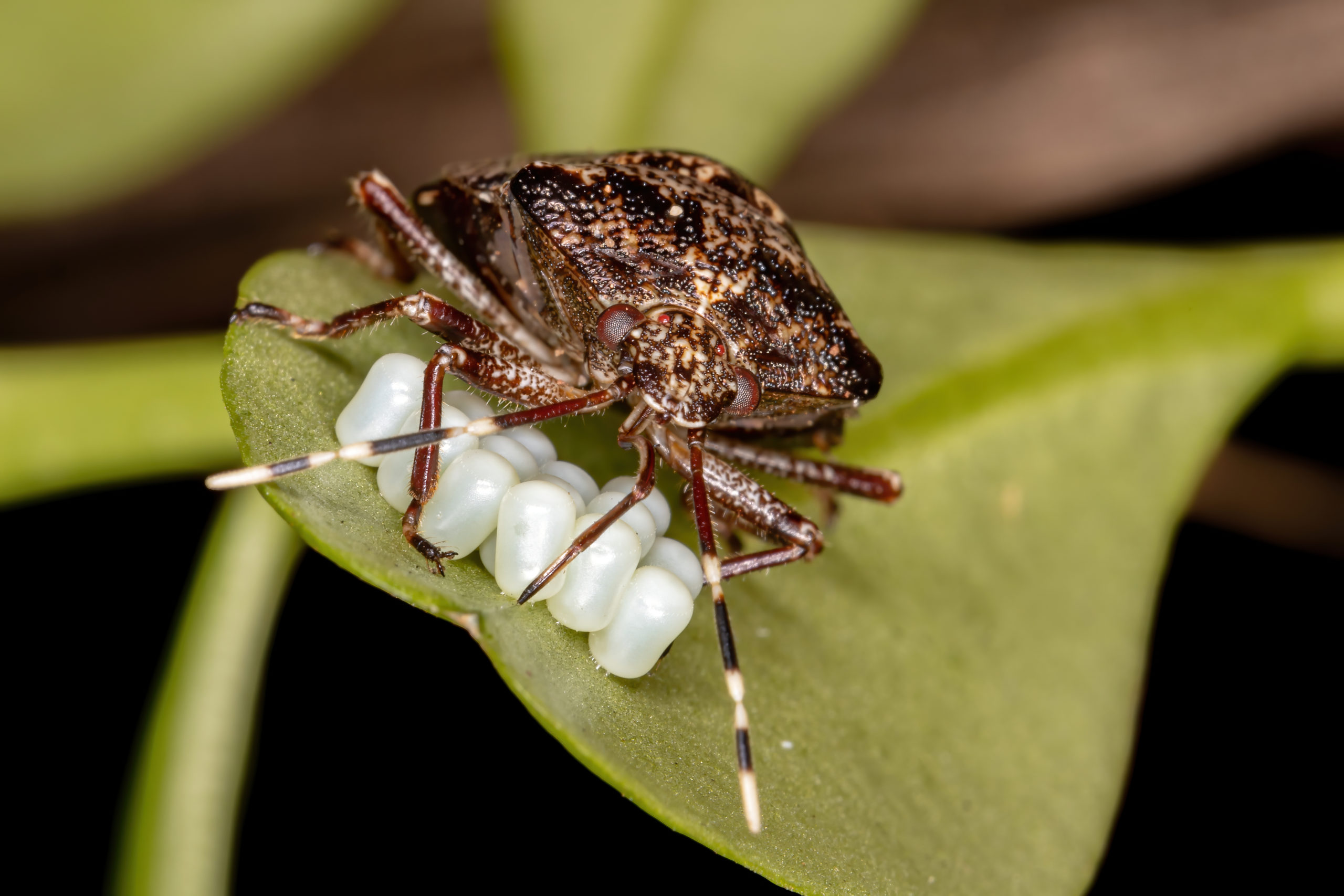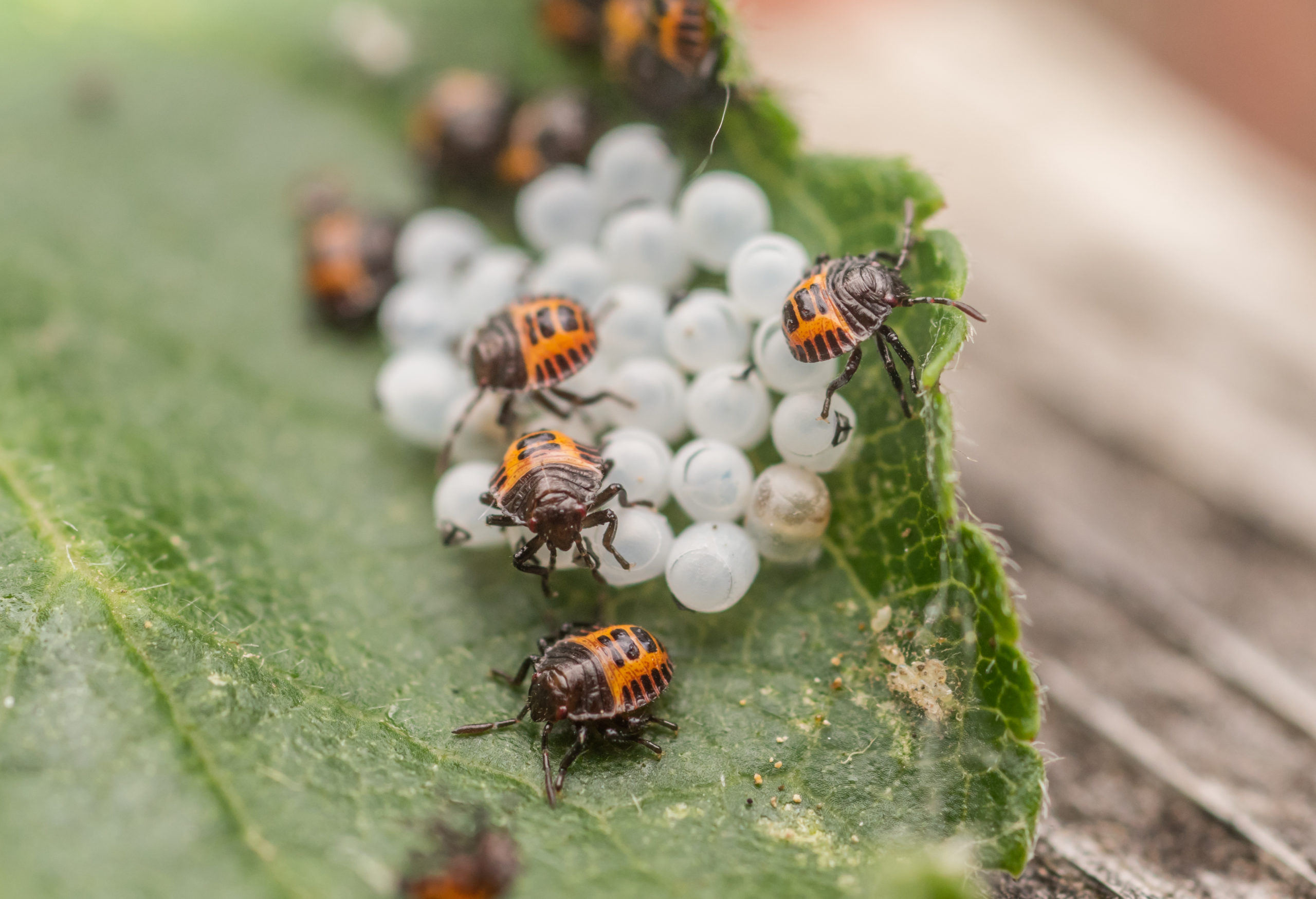Life Cycles of Stink Bugs
Life Cycles of Stink Bugs
Super Smelly Bugs
Known scientifically as the Halyomorpha halys, these bugs belong to the family Pentatomidae and come in many different subspecies within that family. These Pentatomidae bugs have a hard, outer shell shaped like a long trapezoid that acts as an armor for their protection, earning them the nickname ‘shield bugs.’ However, due to their infamous odor, these pests are far more often referred to by the name stink bugs. This nasty stench is due to a compound known as aldehydes which are present within the waxy fluids of the stink bug. When threatened, injured, or even fully squished, the bugs will release this fluid, flooding the surrounding area with the odor of their aldehydes.
These smelly bugs can produce up to 3 generations in a single year and females can lay up to 400 eggs in their lifetime. Their overall life spans range between 6 to 9 months and vary based on the particular species of stink bug, environment they live in, their access to quality food, etc. Throughout their lives, stink bugs pass through 3 primary life stages: eggs, nymphs, and adults.

Eggs
Between the months of May to August, female stink bugs mate and lay batches of eggs. Each batch contains about 20 to 30 eggs which are deposited on the underside of leaves. The eggs can vary in shape from spheres to barrel-like cylinders and are creamy-white or light green in color. After an average of about 5 days, the eggs will hatch, crossing into the nymph stage of their life cycle.

Nymphs
Adolescent stink bugs, known as nymphs, pass through 5 stages of development as nymphs called instars. Each instar stage lasts roughly 7 days and ends in a molt where they shed their old skin, slowly transitioning to adulthood. The first nymph instars measure about 2.4 millimeters in length, lack wings, are flat and round in shape, and reddish orange in color. After 3 more molts, the nymphs enter their last instar stage in which they closely resemble their adult forms, complete with wings and measuring roughly 12 millimeters long. At their final molt at the end of this instar the stink bugs emerge as full-grown adults.

Adults
As adults, stink bugs have the shield-shaped shells they’re known for and are typically green, brown, or grey in color. Their diets consist of a variety of plants from common garden plants to even ornamental plants within homes. Due to their relatively flat bodies, stink bugs are able to very easily access homes using small cracks and crevices. Depending on the particular species of stink bug, their time as adults can last between 2 to 8 months on average.

Keep the Stink Away
Stink bugs aren’t dangerous, nor do they cause any damage to your home, but that doesn’t mean they aren’t super disruptive pests. They typically descend upon homes in groups of hundreds to thousands and, if squashed, give off a terribly off-putting odor. The best way to tackle stink bugs, is to avoid them in the first place by securing your home as best you can and working with professional pest control to administer regular preventative treatments that will deter these pesky stinkers. Call us today for more information on how we can help you, and your nose, stay protected from a smelly siege of stink bugs.

Citations
Cole, J. and Bessin, R. (2015) Brown Marmorated Stinkbug in the Home Garden, University of Kentucky College of Agriculture, Food, and Environment. The Entomology Department at the University of Kentucky. Available at: https://entomology.ca.uky.edu/ef326 (Accessed: October 2020).
Green, H. (2018) Why Do Stink Bugs Stink?, Youtube. Available at: https://www.youtube.com/watch?v=LE-0x9AvGh8(Accessed: June 2020).
Jacobs, S. (2015) Brown Marmorated Stink Bug, Penn State Extension. Edited by M. Skvarla. The Pennsylvania State University College of Agricultural Sciences. Available at: https://extension.psu.edu/brown-marmorated-stink-bug (Accessed: April 20, 2021).
Miley, M. (2018) The Life Cycle of a Stink Bug, Sciencing. Available at: https://sciencing.com/difference-bugs-amp-bed-bugs-5848546.html (Accessed: August 5, 2021).
Penca, C. and Hodges, A. (2019) Brown Marmorated Sting Bug, The University of Florida Department of Entomology and Nematology. The Florida Department of Agriculture and Consumer Services. Available at: https://entnemdept.ufl.edu/creatures/veg/bean/brown_marmorated_stink_bug.htm (Accessed: August 5, 2021).
Schumann, N. (2020) How to Get Rid of Stink Bugs, Country Living. Available at: https://www.countryliving.com/home-maintenance/cleaning/a30627192/how-to-get-rid-stink-bugs/ (Accessed: October 2020).
Stink Bugs Stay Out: Study Measures Gaps Needed for Invasion (2019) Entomology Today. The Entomological Society of America. Available at: https://entomologytoday.org/2019/02/13/stink-bugs-stay-out-study-shows-size-gaps-needed-brown-marmorated-stink-bug-invasion/ (Accessed: October 2020).
Where Do Spiders Like to Hide? A Locals’ Guide to Sneaky Spider Spots (and What to Do About Them)
Where Do Spiders Like to Hide? A Locals’ Guide to Sneaky Spider Spots (and What to Do About Them) Where Do Spiders Like to Hide? [...]
Why Do We See So Many Pests in the Fall?
Why Do We See So Many Pests in the Fall? Why Do We See So Many Pests in the Fall? Summary: Fall’s cooler [...]
Why German Cockroaches are Such Problem Pests (And How to Get Rid of Them)
Why German Cockroaches are Such Problem Pests (And How to Get Rid of Them) Why German Cockroaches are Such Problem Pests (And How to Get [...]
Summer is Ending, But Pests are Still Going Strong
Summer is Ending, But Pests are Still Going Strong Summer is Ending, But Pests are Still Going Strong Summary: Summer is coming to [...]
10 Tips for Going Back to School Pest-Free
10 Tips for Going Back to School Pest-Free 10 Tips for Going Back to School Pest-Free Summary: The school year is a busy [...]
What is Bug Spray, Really?
What is Bug Spray, Really? What is Bug Spray, Really? Summary: Bug spray is a great tool for preventing pests during outdoor activities, [...]

